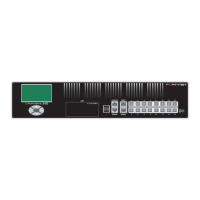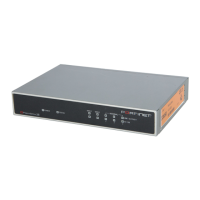FortiGate-3000 and FortiGate-3600 FortiOS 3.0MR4 Install Guide
38 01-30004-0270-20070215
NAT/Route mode installation Configuring the FortiGate unit
Adding a default route
Add a default route to configure where the FortiGate unit sends traffic destined for
an external network (usually the Internet). Adding the default route also defines
which interface is connected to an external network. The default route is not
required if the interface connected to the external network is configured using
DHCP or PPPoE.
To add a default route
1 Go to Router > Static.
2 If the Static Route table contains a default route (IP and Mask set to 0.0.0.0),
select the Delete icon to delete this route.
3 Select Create New.
4 Select Destination IP to 0.0.0.0.
5 Set Mask to 0.0.0.0.
6 Set Gateway to the default gateway IP address.
7 Set Device to the interface connected to the external network.
8 Select OK.
Verifying the web-based manager configuration
To verify access settings, go to the interface you want to verify and select the edit
icon. The Administrative Access field should have check marks beside the settings
you chose in the preceeding steps.
Verify the connection
To verify your connection, try the following:
• browse to www.fortinet.com
• retrieve or send email from your email account
If you cannot browse to the web site or retrieve/send email from your account,
review the previous steps to ensure all information was entered correctly and try
again.
Using the front control buttons and LCD
Basic settings, including interface IP addresses, netmasks, default gateways, and
the FortiGate operating mode can be configured using the front control buttons
and LCD. Use the information you recorded in Table 11 on page 36 to complete
the following procedure. Start when the main menu setting is displayed on the
LCD.

